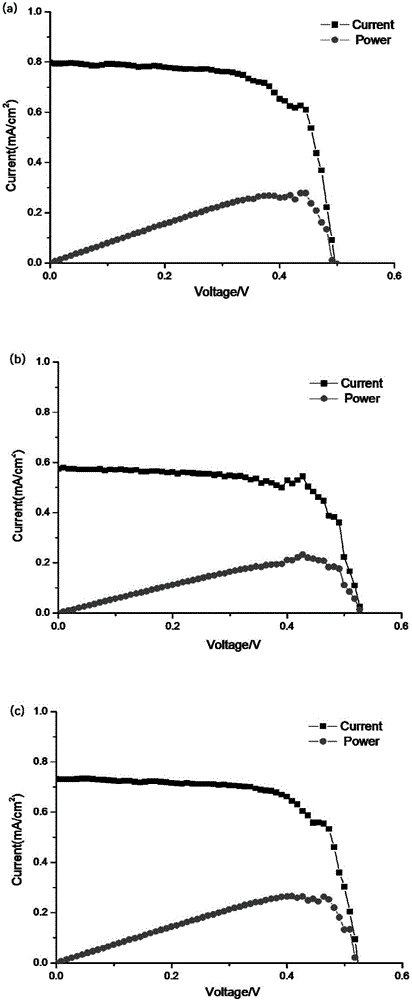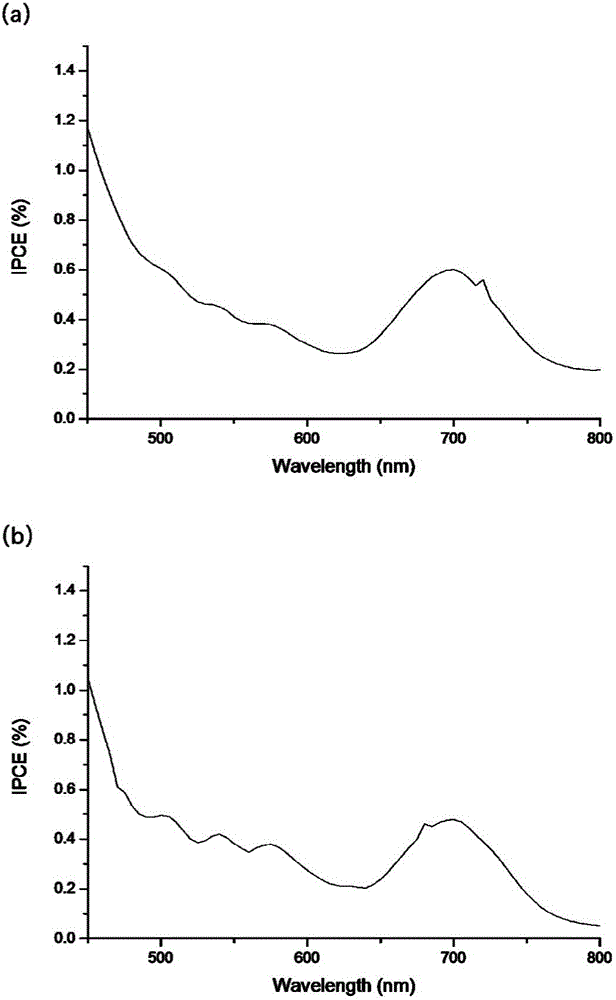Genetic recombined phycocyanobilin serving as optical sensitization material and application thereof
A sensitizing material, phycocyanobilin technology, applied in the fields of biotechnology and energy, can solve problems such as poor stability, limited application of photosensitive materials, protein variability, etc., and achieve the effects of low cost, high quantum efficiency, and high photovoltaic characteristics
- Summary
- Abstract
- Description
- Claims
- Application Information
AI Technical Summary
Problems solved by technology
Method used
Image
Examples
Embodiment 1
[0037] Obtaining of sensitizing material phycocyanin:
[0038] The pET28a-hox1-pcyA strain originally preserved in the laboratory (this strain can use the metabolite heme in Escherichia coli to be converted into phycocyanin by the enzymes Hox1 and PcyA), according to the inoculation volume of 20 μL, inoculate the strain in 5ml In liquid sterile LB medium, culture at 37°C, 170rpm for 12-16h. Then, according to the volume ratio of 1% inoculum, the strain was inoculated in 1L of TB medium, and cultivated at 37°C for OD 600 to 0.8-1.0, then add appropriate amount of IPTG, induce at a low temperature of 18°C, and collect the bacteria after 20 hours.
[0039] Separation and purification of phycocyanin: Take the Escherichia coli obtained in the previous step out of the -80°C refrigerator, add 50-100mL of methanol according to the sample size, vortex and mix well, and then transfer it to a three-necked flask. Wrap it in a water bath at 50°C for 1-2h. After the reaction is completed...
Embodiment 2
[0044] Construction of the photoanode: The photoanode is TiO 2 Electrode, customized TiO by Dalian Qiseguang Technology 2 Semiconductor film thickness of 1:1 "20nmTiO 2 Single layer film (2μm)+200nmTiO 2 Single-layer scattering layer (2μm)". The above photoanode is made by screen printing method and exists on FTO (fluorine-doped tin oxide) glass substrate. The size of the monolithic electrode glass is 12×18mm and the thickness is 2.2mm. TiO 2 Semiconductor film size 6×6mm (effective area 0.36cm 2 ), is a nanoporous structure with a pore size of 1-1000nm.
[0045] Sensitization of the photoanode: the anode electrode was heated at 350° C. for 30 min in a muffle furnace (Yamato Corporation, Japan, Model Since 1889) and cooled naturally and rapidly to 50° C. at room temperature. Immediately soak the titanium dioxide anode electrode in the PCB-ether sensitization solution, absorb it in the dark at room temperature for 24 hours, rinse both sides with absolute ethanol to remove t...
Embodiment 3
[0054] 1) The preparation steps of phycocyanobilin are as described in Example 1.
[0055]2) A gold foil with a nanoporous structure is used as a photoanode, and platinum is used as a counter electrode. After ultrasonic vibration treatment with ethanol and chloroform for 20 minutes, UV ozone disinfection for 10 minutes. A gold foil electrode was soaked in a solution of phycocyanobilin in ether for 24 hours at room temperature in the dark. After adsorption, the sensitized photoanode was rinsed with deionized water to remove weak adsorption, and then dried under nitrogen.
[0056] 3) The assembly of the phycocyanobilin bio-solar cell or light-harvesting device is the same as that described in Example 2.
PUM
| Property | Measurement | Unit |
|---|---|---|
| Aperture | aaaaa | aaaaa |
Abstract
Description
Claims
Application Information
 Login to View More
Login to View More - R&D
- Intellectual Property
- Life Sciences
- Materials
- Tech Scout
- Unparalleled Data Quality
- Higher Quality Content
- 60% Fewer Hallucinations
Browse by: Latest US Patents, China's latest patents, Technical Efficacy Thesaurus, Application Domain, Technology Topic, Popular Technical Reports.
© 2025 PatSnap. All rights reserved.Legal|Privacy policy|Modern Slavery Act Transparency Statement|Sitemap|About US| Contact US: help@patsnap.com



